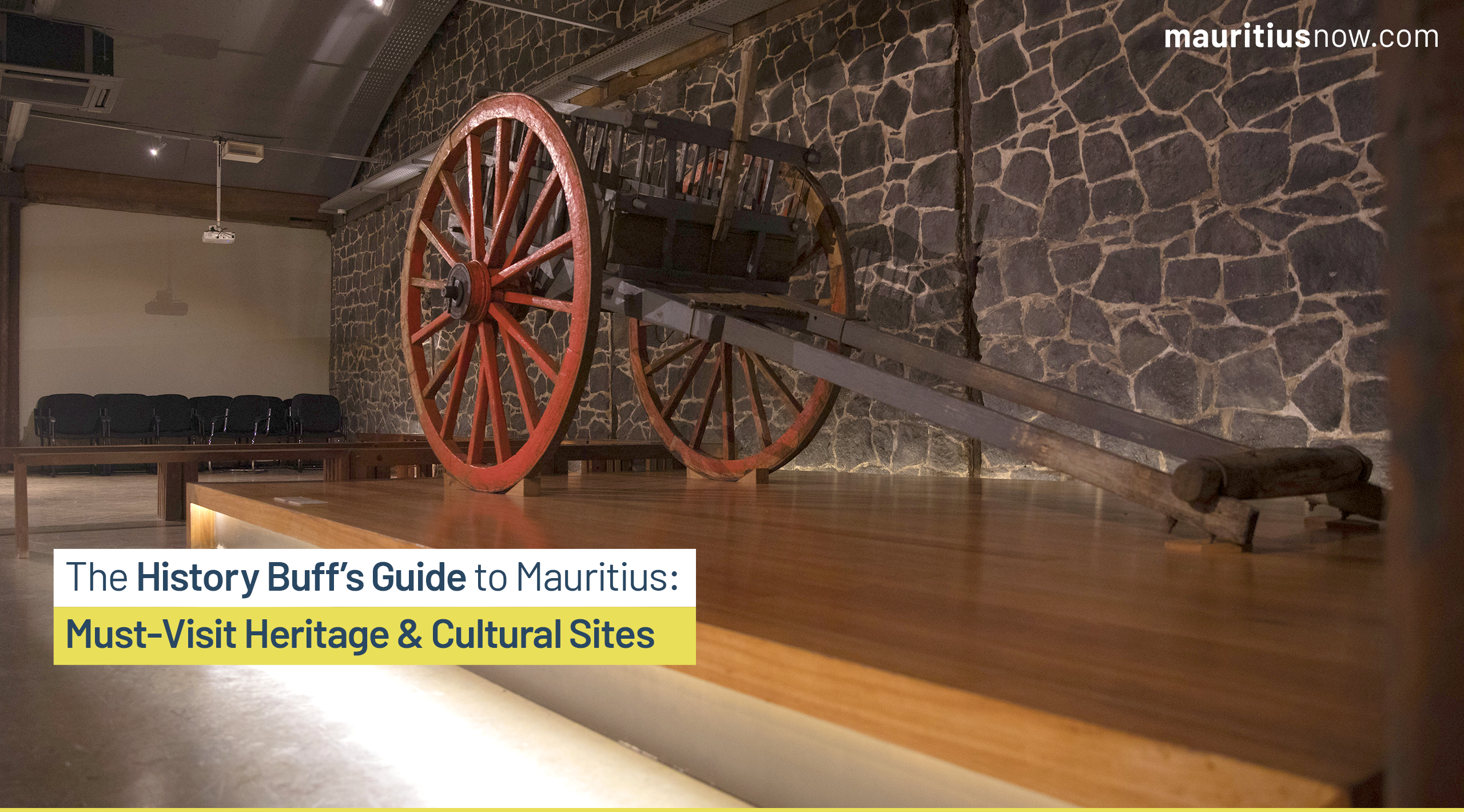
The History Buff’s Guide to Mauritius: Must-Visit Heritage & Cultural Sites
Welcome to Mauritius, where past and present blend seamlessly to form an island rich in culture, tradition, and extraordinary stories. If you’re keen on delving into the heart of this tropical paradise’s heritage, you’re in the right place. Forget the tourist brochures that only talk about beaches—this is your personal map to the soul of Mauritius, weaving through colonial sugar mills, centuries-old houses, forts, and temples that each whisper tales of times gone by.
The secret to truly experiencing Mauritius is looking beyond its waters and pristine shorelines. While you can certainly stretch out on the sand later, the island’s real treasure lies in its vibrant past—a tapestry woven from colonial influences, Indian heritage, African roots, and Creole traditions. So lace up your comfiest shoes, grab your camera, and prepare to be transported back in time.
1. Colonial History & The Sugar Trade
When you think of Mauritius, you might picture lush sugarcane fields carpeting the countryside. There’s a reason for that: sugar was once the backbone of the Mauritian economy, shaping the island’s infrastructure, labor force, and overall development. Dive into this sweet slice of history at two standout sites that embody the colonial era and its impact on modern Mauritian society.
L’Aventure du Sucre
Set within the reconstructed Beau Plan Sugar Factory near Pamplemousses, L’Aventure du Sucre is not just a museum; it’s a multi-sensory experience that guides you through Mauritius’s sugar-producing legacy. Wander through interactive exhibitions explaining how sugar shaped trade routes, social hierarchies, and even politics. You’ll see massive metal turbines, antiques machinery, and taste different varieties of Mauritian sugar (yes, there’s more than just “brown” or “white”). If you’ve ever wondered how sugar transformed an island, this is where your curiosity gets rewarded.
- Insider Tip: After exploring, pop into the on-site shop for locally made jams, spices, and rum—because what better souvenir than a taste of Mauritius to take home?
Eureka House
Next, head to Eureka House in Moka for a peek into aristocratic colonial life. Built in the 1830s, this grand Creole mansion is perched against a backdrop of the Moka mountain range, surrounded by lush gardens and tinkling waterfalls. Take your time strolling through the house’s wide verandas and antique-filled rooms. You’ll discover family portraits, period furniture, and original documents that bring the estate’s storied past to life. While the home’s architecture alone is worth the visit—boasting 109 doors and windows—the tranquil grounds also hide scenic waterfalls that are perfect for a short nature walk.
- Insider Tip: Savor lunch at the on-site restaurant. Expect a fusion of flavors, from curry dishes to French-inspired courses—an authentic taste of Mauritian creole cuisine right under the estate’s centuries-old beams.
2. The Impact of Indian Heritage
Indian heritage has played a pivotal role in shaping Mauritius into the multicultural nation it is today. In the 19th century, indentured laborers from India arrived to work on sugar plantations, leaving an indelible mark on the island’s language, festivals, cuisine, and religious practices. To fully appreciate the scale of this cultural mosaic, there are two incredible sites you won’t want to miss.
Kaylasson Temple (Alternate Option)
While Grand Bassin (also known as Ganga Talao) is the well-known spiritual heartland for Hindus in Mauritius, another option to explore Indian heritage is the Kaylasson Temple in Sainte Croix, Port Louis. Famous for its Dravidian-style architecture—think intricate carvings and vibrant sculptures—this temple offers a deep dive into the island’s Hindu traditions. Stepping inside, you’ll be greeted by exquisitely carved deities, colorful murals, and the soft glow of oil lamps.
- Insider Tip: Try to plan your visit around a festive period like Cavadee or Thaipusam, when you’ll see riveting processions, devotional music, and traditional rituals that illustrate the depth of Hindu customs on the island.
3. Creole Culture & Traditions
Mauritian Creole culture is as diverse as the island’s languages. A unique blend of African, Malagasy, French, and other influences, Creole traditions permeate Mauritian music, dance, architecture, and cuisine. For a close-up look, consider these two historically rich venues.
Château de Labourdonnais
Famed for its majestic neoclassical style, the Château de Labourdonnais in Mapou is a 19th-century estate turned museum. Strolling through the manicured lawns and perfectly restored interiors, you might feel transported to a different era. Beyond the stately elegance, you’ll discover exhibitions that reveal the day-to-day Creole lifestyle of the estate’s original inhabitants. The sprawling orchard outside brims with tropical fruit trees—lychee, mango, guava—which also find their way into the château’s artisanal jams and sorbets.
- Insider Tip: After your tour, swing by the distillery to witness the making of rum from locally grown sugarcane. End the excursion with a tasting session, because no deep dive into Mauritian culture is complete without sampling the island’s signature spirit.
Mahébourg Museum
For an authentic window into local life, head to the quaint coastal town of Mahébourg. The Mahébourg Museum (sometimes called the National History Museum of Mahébourg) is housed in a 1772 building brimming with naval artifacts, old cannons, and well-preserved relics from the island’s French and British periods. But it’s not all about battles and conquests—displays on fishing traditions, local crafts, and daily Creole customs bring the culture alive in living color. Mahébourg itself is a microcosm of Mauritian life, complete with bustling markets and sea-kissed promenades.
- Insider Tip: Pair your museum visit with a walk around the nearby waterfront and market stalls. Mahébourg’s Sunday market is particularly vibrant, offering a rainbow of fresh produce, homemade pickles, and street food favorites like dhal puri and gato piments.
4. Historic Forts & Battle Sites
Mauritius has seen its fair share of colonial tussles—between the Dutch, French, and British. The island is dotted with forts and battle sites that serve as silent witnesses to centuries of strategic warfare. Two forts, in particular, deliver both historical insight and breathtaking views.
Fort Adelaide (La Citadelle)
Built by the British in the early 19th century, Fort Adelaide, often called “La Citadelle,” overlooks Port Louis. Standing atop its fortified ramparts, you’ll have a panoramic view of Mauritius skyline, harbor, and surrounding mountains. The fort’s sturdy basalt walls might look austere, but within them are stories of colonial ambition and transformation. Wander through the courtyard, peer at the old cannons, and soak in the vantage point that once helped the British guard against intrusions.
- Insider Tip: Visit in the late afternoon when golden hour bathes the city in warm light, creating postcard-worthy photos you’ll cherish.
Fort Frederik Hendrik
If you’re a completist who wants to trace the earliest European footprints on the island, Fort Frederik Hendrik is a must-see. Built by the Dutch in the 17th century, the fort’s remains sit in Old Grand Port, close to where the first Dutch settlers established themselves. Here, it’s less about towering walls and more about the archeological vestiges that unveil how the Dutch impacted Mauritius’s flora and fauna- They introduced sugarcane, deer. Strolling through the area, you can almost imagine life as it once was—tense, resourceful, and forging a new identity in an uncharted paradise.
- Insider Tip: The site includes a small museum that highlights maps, historical records, and recovered artifacts, offering fascinating insights into the island’s earliest colonial chapters.
5. Local Traditions & Events That Bring History to Life
Mauritius hosts a variety of cultural events and festivals throughout the year that showcase the island’s mélange of influences, celebrating everything from Hindu rituals to Creole storytelling.
- Holi (Phagwa): If you visit in spring, prepare for a riot of color. This Hindu festival sees locals drenched in rainbow hues of powder and water, symbolizing unity, joy, and the triumph of good over evil.
- Cavadee: Another Hindu festival dedicated to Lord Murugan. Expect eye-popping processions, with some devotees carrying ornate arches (cavadees) on their shoulders, or performing acts of penance like piercing.
- Chinese New Year: Mauritius’s Chinese community welcomes the Lunar New Year with lion dances, fireworks, and special foods—reminding everyone that Mauritian cultural life extends far beyond just Indian and European influences.
- Festival Kreol: Held mainly in late November, this celebration puts Creole music, dance (like the sega), and cuisine front and center. Attend a sega performance near a beach bonfire, and you’ll instantly feel the infectious rhythm that’s become synonymous with Mauritian identity.
If you happen to be around during any of these events, jump right in! Ask questions, join the dance, sample the food. Locals are famously warm and eager to share their traditions with visitors.
Bringing the Past Full Circle
Mauritius isn’t just a postcard-perfect island of lagoons and white sand beaches. It’s a living museum of global trade, cultural exchange, and the resilience of people who traversed continents to build a new life. Each site you visit—be it a looming fortress, a colonial house, or a vibrant temple—tells a chapter in the island’s grand narrative.
Whether you’re sampling sugar at L’Aventure du Sucre, standing in awe at the intricately carved pillars of Kaylasson Temple, or simply chatting with locals in Mahébourg, remember that every moment is a chance to connect with a deeper cultural legacy.
Safe travels and happy exploring!







Leave a Reply